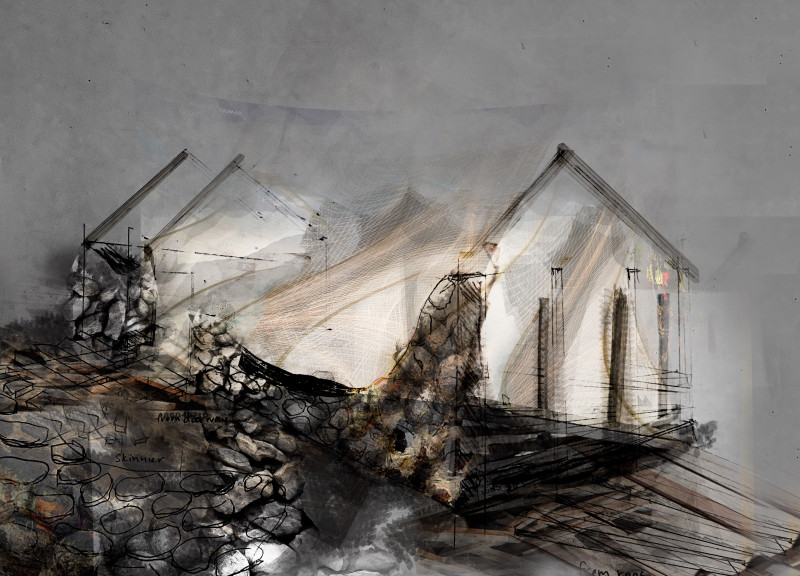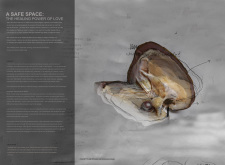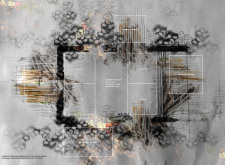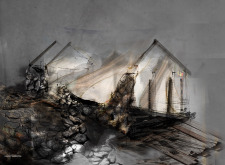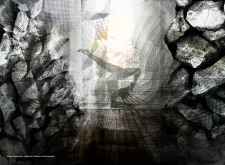5 key facts about this project
The design integrates multiple user spaces to accommodate individual reflection, communal interaction, and therapeutic activities. The overall spatial organization encourages social engagement while also providing privacy for users, striking a balance between community and solitude.
Unique Architectural Strategies and Materiality
What sets this project apart from others is its conceptual framework centered around vulnerability and transformation. The architecture employs a metaphorical interpretation of a clam and its pearl, where the clam represents protective barriers, and the pearl symbolizes the valuable potential of healing that resides within individuals. This conceptual approach informs both the design language and spatial arrangements.
Material choices are critical in establishing the project's vision. The use of stone for the exterior walls conveys stability and strength, offering a sense of assurance. Wood elements within the interior add warmth and a human touch, promoting comfort. Transparent glass elements allow for openness while maintaining a connection to nature, creating an atmosphere that invites light and visibility, highlighting the importance of sharing experiences.
Innovative Spatial Configuration and Community Focus
The project features innovative spatial configurations designed to encourage both communal activities and interactions. A dedicated yoga studio and tea-making area are incorporated to support wellness practices while fostering a sense of community. The dismantling of pre-existing walls illustrates a commitment to transforming hidden barriers into open pathways for connection and healing.
Overall, the design emphasizes the need for spaces that accommodate diverse emotional experiences. The layering of different materials and thoughtful spatial arrangements speaks to the complexity of personal healing journeys and the importance of community support.
For further insights into the project, including architectural plans, sections, and designs, readers are encouraged to explore the detailed presentation, which outlines the architectural ideas behind "A Safe Space: The Healing Power of Love."


